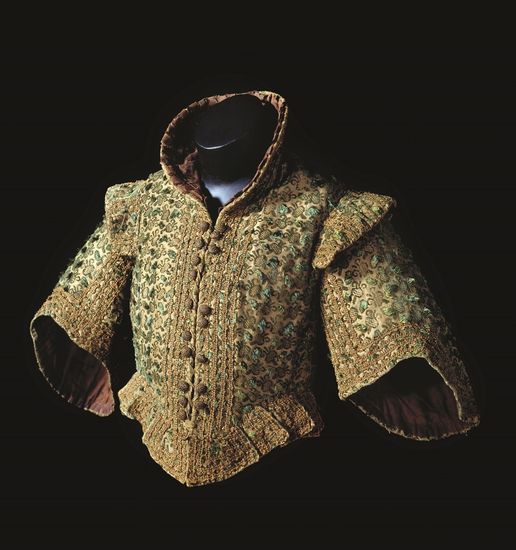This article was originally published in the CODART eZine no. 9 Summer 2017.
Our clothes do so much for us. They protect us from extreme weather conditions, enable us to perform physical activity, help us look attractive or impressive, and project our individual and collective aesthetic values. Yet few of the shirts, dresses, shoes, belts and scarves that we use to perform our daily offices and celebrate more significant milestones will survive to enrich history’s account of our times. In what circumstances do these functional garments become worthy of preservation? In which cases do we recognize clothing designers as artists? And how do collections of this type function in the general ecosystem of historically significant objects, artifacts and such luxury goods as paintings, tapestries, sculpture and jewelry?
Costumes preserved from decades and centuries past tell us how people lived and how wealth and power were asserted. The production and distribution of clothing is also bound up with the parallel histories of agriculture, industry and trade. Bert Watteeuw gives a preview of a forthcoming volume of proceedings from the 2014 conference (Un)dressing Rubens: Fashion and Painting in Seventeenth-Century Antwerp, which treats the intersection of these related fields. New readings of important archival documents shed light on the crucial role of the textile trade in Antwerp, and more specifically on the significance of garments and accessories to the household of Peter Paul Rubens and his contemporaries.
Other articles in the present issue not only demonstrate the range of collections that inform our understanding of Dutch and Flemish dress but also offer different approaches to the study and display of these important yet often marginalized objects. The planned reopening of the Gruuthusemuseum in Bruges offers a chance to reimagine the story of lace, as Aleid Hemeryck recounts in her article. The production and use of lace are essential to the history of Bruges. As Hemeryck’s commentary reveals, this ornamental textile is at the basis of discussions of local and regional cultural history, discussions that provide opportunities to consider the variety of technical refinement in the production of lace and its relevance to contemporary fashion and design.
As a category of costume history, armor – in some ways the very opposite of lace, with its lightness and openwork – allows us to consider the history of dress more specifically in the context of warfare and sport. Stefan Krause describes highlights of the field-defining armor collection of the Kunsthistorisches Museum (Vienna), including the armor of Maurits of Orange. He also reminds us that armor is a powerful vehicle for the study of fashion trends in early-modern Europe and at the same time preserves the virtuosity of its makers. It stands to reason that fashions in armor should be considered alongside textile fashions. This is evident from Krause’s reflections on the recurrent challenge of displaying plate armor, complete with the textile garments that would have accompanied it, on lifelike mannequins. Similar challenges are discussed by Madelief Hohé of the Gemeentemuseum in The Hague, who is interviewed in this issue of the eZine.

Boy’s jacket with Italian velvet, late sixteenth century, Gemeentemuseum, The Hague
The Modemuseum (Fashion Museum) in Hasselt provides an interesting counterpoint to costume collections held by more broadly oriented institutions such as the Gemeentemuseum or indeed the Kunsthistoriches Museum. As Karolien De Clippel states in her overview of the Modemuseum collection, her institution is alone in the Low Countries in its dedication to collecting dress to the exclusion of other objects of design or applied art. De Clippel outlines the role of the Modemuseum in preserving local history, and also points out the need to interpret its collection with a view to placing it in the larger history of Western fashion from 1750 to the present.
Like Madelief Hohé, De Clippel emphasizes the necessity for increased digitization of permanent collections and greater accessibility through web-based platforms. Indeed, while special exhibitions have garnered widespread praise and sparked enthusiasm – particularly those featuring contemporary designers – more research on permanent holdings of historical dress can help increase our knowledge of these important and beautiful objects, which have much more in common with conventional objects of fine art than previously assumed.
Recent monographic exhibitions have brought the display of clothing closer to the core of contemporary museum practice. These include the blockbuster projects mounted by the Costume Institute at the Metropolitan Museum (Alexander McQueen: Savage Beauty, 2011) and the Victoria and Albert Museum (Vivienne Westwood, 2004), to name but two leading institutions in this field. The success of such exhibitions has encouraged curators of more conventional media to incorporate garments in their displays – to wit, Impressionism, Fashion, Modernity (2013), an exhibition organized by the Art Institute of Chicago, which included garments and fashion accessories alongside the paintings in which they were depicted. The advent of private museums funded by luxury clothing brands such as Prada, Louis Vuitton, and Marciano suggests that those with a close eye on fashion may have an increasing influence on the status of costume and textiles within the broader landscape of museum culture. Whether these forces will align to augment the study and presentation of more historical collections of dress remains to be seen.
Victoria Sancho Lobis is Prince Trust Curator of Prints and Drawings at the Art Institute of Chicago. She has been a member of CODART since 2009.
